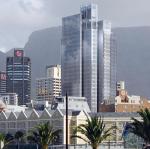Three wind farms to supply national grid
Three wind farms are under construction in the Northern Cape following the conclusion of the third round of SA’s Renewable Energy Independent Power Producer Procurement Programme.
The three wind farms will cost about R9bn and, when completed, will have a combined generation capacity of 360 megawatts.
Lucy Chege, GM Infrastructure Finance (responsible for energy projects within SA) at the DBSA, says that while the three wind farms are separate projects that have the same sponsors, they use the same technology and the lender group is made up of the same parties.
“The three Northern Cape projects are the 140MW Khobab wind farm, the 80MW Noupoort wind farm and the 140MW Loeriesfontein wind farm,” Chege says.
Construction is being handled by Murray & Roberts and Consolidated Power Projects South Africa (Conco) who have been selected as main contractors with Siemens supplying and installing the wind turbines.
The funding consortium was Absa Capital and DBSA who jointly arranged the debt finance for the projects. This collaboration provides a practical illustration of the co- operation taking place between DBSA and commercial lenders. Bowman & Gilfillan and Simmons & Simmons were the lenders’ legal advisers for all three projects while Fasken Martineau and Stoel Rives were the sponsors’legal counsel.
The projects were developed by Mainstream Renewable Power which undertakes wind projects around the world. Other equity partners include Actis and local community trusts involved in each of the projects.
A partnership between Genesis Eco-Energy and Lereko Metier Sustainable Capital will also be a joint partner in the investment.
Other companies participating as partners are Thebe Investments and Old Mutual’s IDEAS Managed Fund, as well as Futuregrowth Asset Management.
DBSA also provided funding to support each of the community trusts involved in the projects.
As each wind farm is on a different site with a different resource profile, the viability of each project had to be assessed separately.
“In terms of the sponsor it is one overview. However, the characteristics of each wind farm must be investigated and evaluated individually so that all the parties involved are comfortable, in particular with regard to the wind resource that is available throughout the year at each site,” Chege says.
The projects began construction in February this year and, if all goes according to plan, the wind farms should be up and running and contributing to the national grid within two to three years.
“The time from bid approval and commencement of construction illustrates one of the advantages associated with renewable energy projects, namely that in many cases the projects can be fully developed and implemented within a relatively short space of time.
“Renewable energy is much quicker to implement than, for example, a base load coal-fired power station.
“Conventional power stations take longer to construct and this affects the timing to deliver power into the national grid,” Chege says.
She adds that another aspect that comes out of the development of the three projects is that they illustrate the viability and importance of partnerships between the DBSA, commercial banks and the private sector.
“As a combined team the project participants proved strong and the DBSA’s partnering with a commercial bank was successful.
“The wind farms should prove beneficial for the Northern Cape and for the country as a whole. These three wind farms operating in the province will provide employment opportunities during the construction phase and longer-term employment should result for some people in the area once the projects are completed.
“Most importantly, the communities within a 50km radius of the projects have meaningful stakes in the projects and this will result in long-term gains for the communities concerned. Time will tell how the funds earned by the community trusts will be deployed in the communities but there is definitely an economic development thrust in the renewable energy programme.
“The programme empowers communities to create further projects in their areas so that additional development takes place when the trusts’ dividend flows are ploughed back and invested into community projects,” Chege says.

















